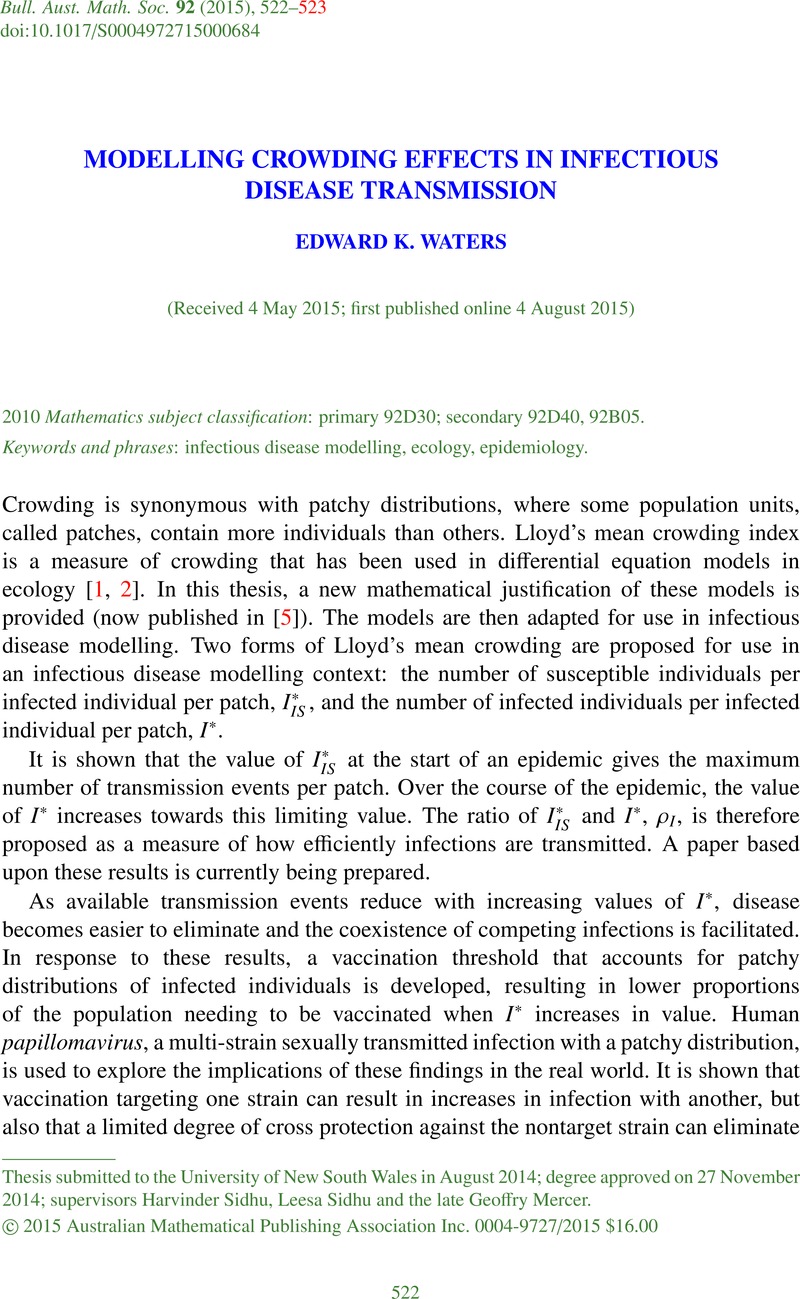Crossref Citations
This article has been cited by the following publications. This list is generated based on data provided by Crossref.
Sardar, Tridip
Ghosh, Indrajit
Rodó, Xavier
Chattopadhyay, Joydev
and
Althouse, Benjamin
2020.
A realistic two-strain model for MERS-CoV infection uncovers the high risk for epidemic propagation.
PLOS Neglected Tropical Diseases,
Vol. 14,
Issue. 2,
p.
e0008065.





